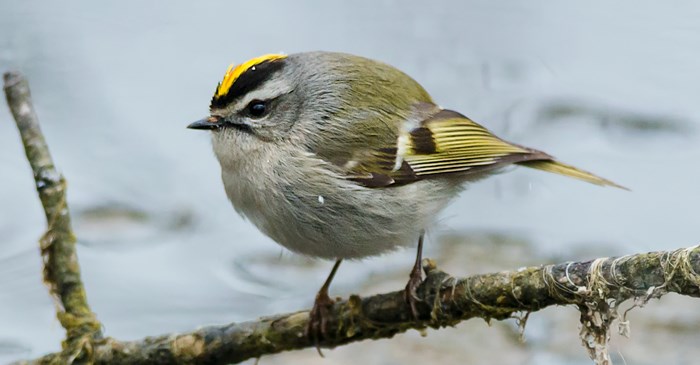Here’s a rare, but tough bird to watch for during your winter walks through the woods (especially if those woods have pine trees). The golden-crowned kinglet is a hard one to find, but the species never fails to inspire for the way it's adapted to even the most brutal winters. At the very least, if you've ever complained about the cold, the kinglet will make you feel like a wimp!
One easy way to find them is to keep an ear out for the call of the chickadee. Kinglet birds will join their foraging flocks, which also feature nuthatches, woodpeckers and warblers. The golden-crowned kinglet stands out for its shock of orangey-yellow on the top of its head, with a wash of soft yellow on its olive-colored body.
Beyond joining the entourage, kinglets are not like the other birds who winter in the continental U.S. They are insect eaters, but when winter comes, they don’t migrate to a tropical land. Nor do they switch to a vegetarian diet of seeds and fruit. They continue to hunt and glean for insects.
One thing that scientists know is a species of moth caterpillar plays a big role in helping the golden-crowned kinglet survive. These caterpillars attach themselves to pine trees, camouflaged as twigs, for the winter. If they escape discovery by these birds, they regenerate in the spring. Still, winter is very tough on the golden-crowned kinglet, and only one in six will survive a full year. To maintain their 111-degree body temperatures, they sleep in a huddle at night and spend every waking hour searching for food, which means even a food shortage that lasts a few hours can be fatal. In the spring, they return to their northern Canadian breeding grounds to raise their large families of nestlings, laying eight to nine eggs in a single nest.
Golden-crowned Kinglets only rarely visit bird feeders, as their tiny beaks are not well suited for cracking seeds. But if you live near a wooded area with plenty of chickadees, fill your feeder with Lyric Fine Tunes, as you might get lucky and spy a few “mini kings” in your backyard.
